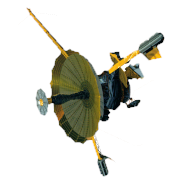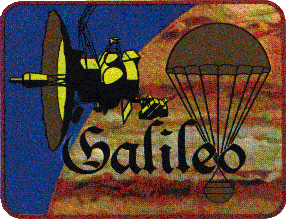GALILEO
Galileo EPD Publications and Presentations
Galileo EPD Publications and Presentations
Co-authored by Fundamental Technologies Personnel
Galileo Energetic Particles Detector
This document is a summary of:
Results from the Galileo Energetic Particle Detector
During the Amalthea Encounter of November 5th, 2002
Dr. Thomas Armstrong, Lucas Miller, Scott Wadley,
Dr. Richard McEntire, Dr. Donald Williams
9 December, 2003
American Geophysical Union
San Francisco, California, USA
Presentation Number SM22B-0255
Click on a thumbnail to view the larger image.
Return to this main page by clicking on your browser's back button.
|
A2 |
 B2 |
 CD2 |
 EF2 |
||||
|
A3 |
 B3 |
C3 |
D3 |
E3 |
F3 |
||
 A4 |
B4 |
C4 |
D4 |
EF4 |
|||
 AB5 |
C5 |
CD5 |
D5 |
E5 |
 F5 |
||
For a downloadable and printer friendly version click here!
Updated 8/23/19, Cameron Crane
QUICK FACTS
Manufacturer: The Galileo Spacecraft
was manufactured by the Jet Propulsion Laboratory,
Messerschmitt-Bölkow-Blohm, General Electric, and the
Hughes Aircraft Company.
Mission Duration: Galileo was planned to have a mission duration of around 8 years, but was kept in operation for 13 years, 11 months, and 3 days, until it was destroyed in a controlled impact with Jupiter on September 21, 2003.
Destination: Galileo's destination was Jupiter and its moons, which it orbitted for 7 years, 9 months, and 13 days.
Mission Duration: Galileo was planned to have a mission duration of around 8 years, but was kept in operation for 13 years, 11 months, and 3 days, until it was destroyed in a controlled impact with Jupiter on September 21, 2003.
Destination: Galileo's destination was Jupiter and its moons, which it orbitted for 7 years, 9 months, and 13 days.













